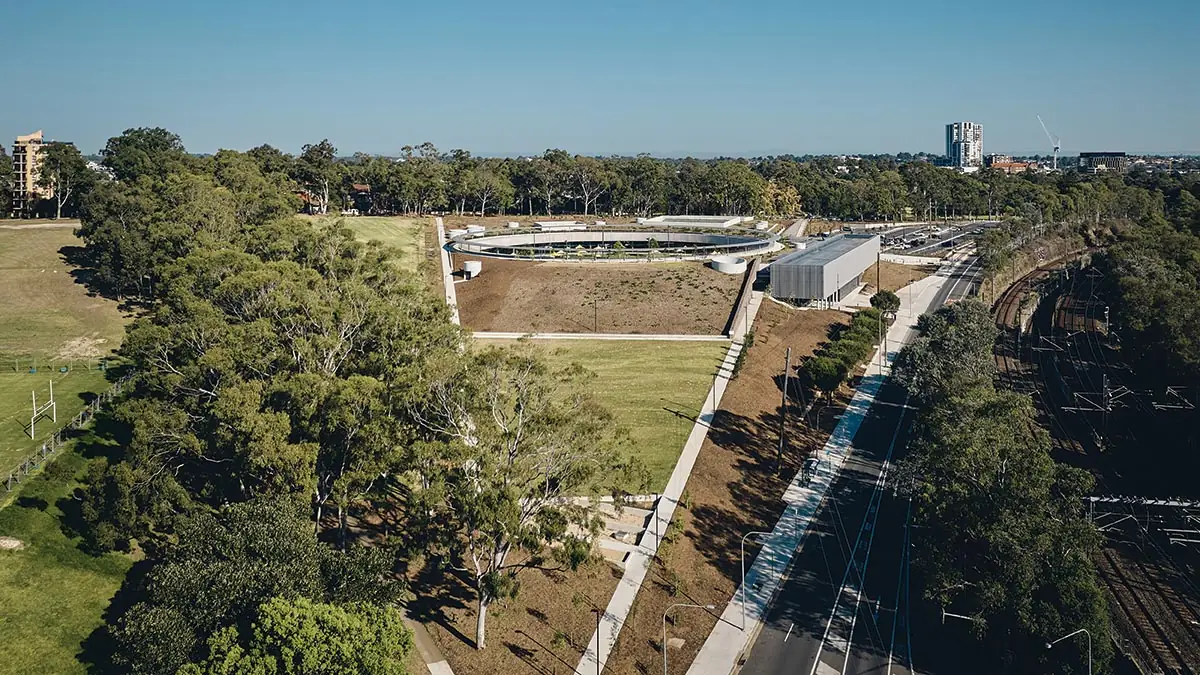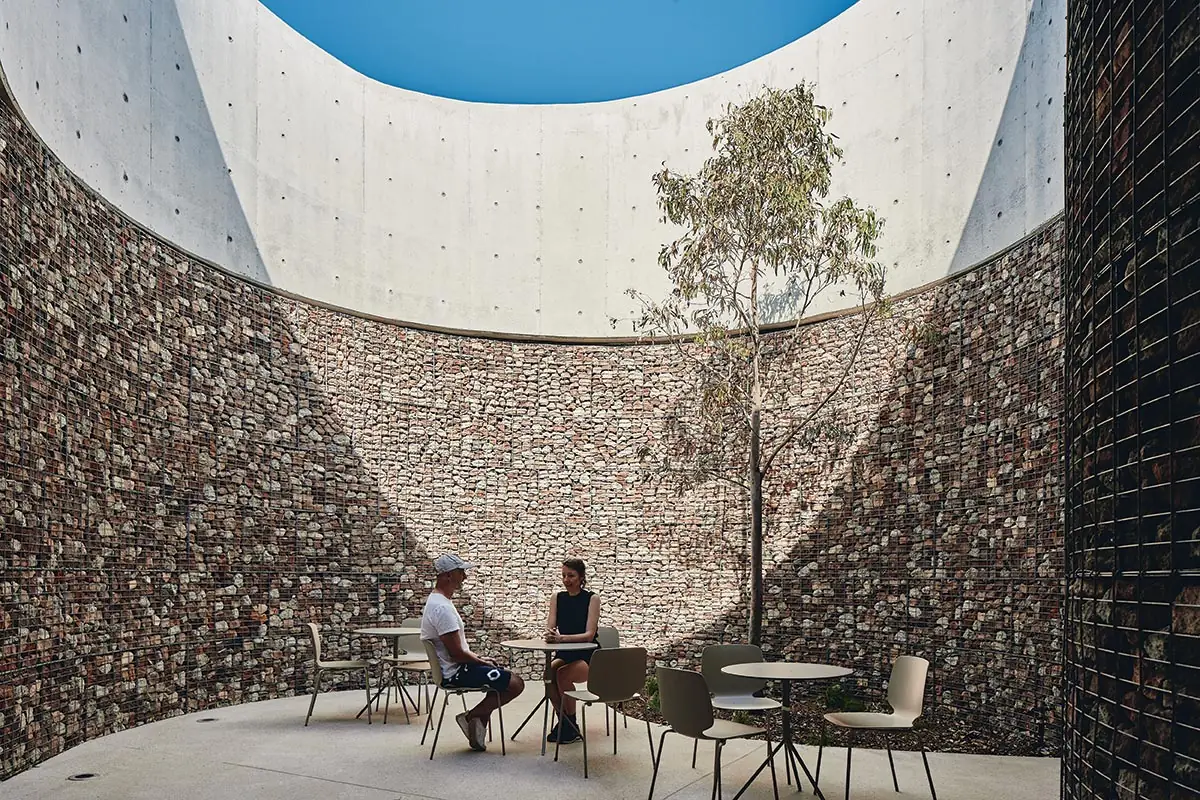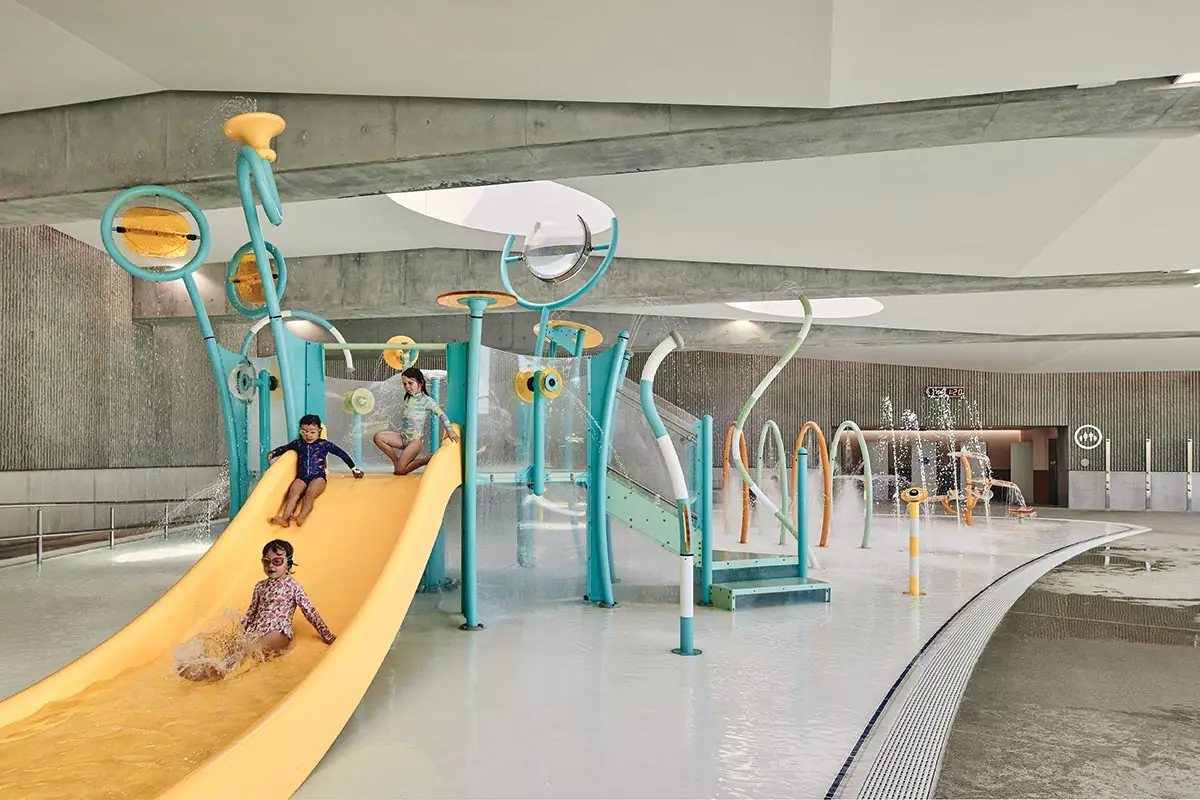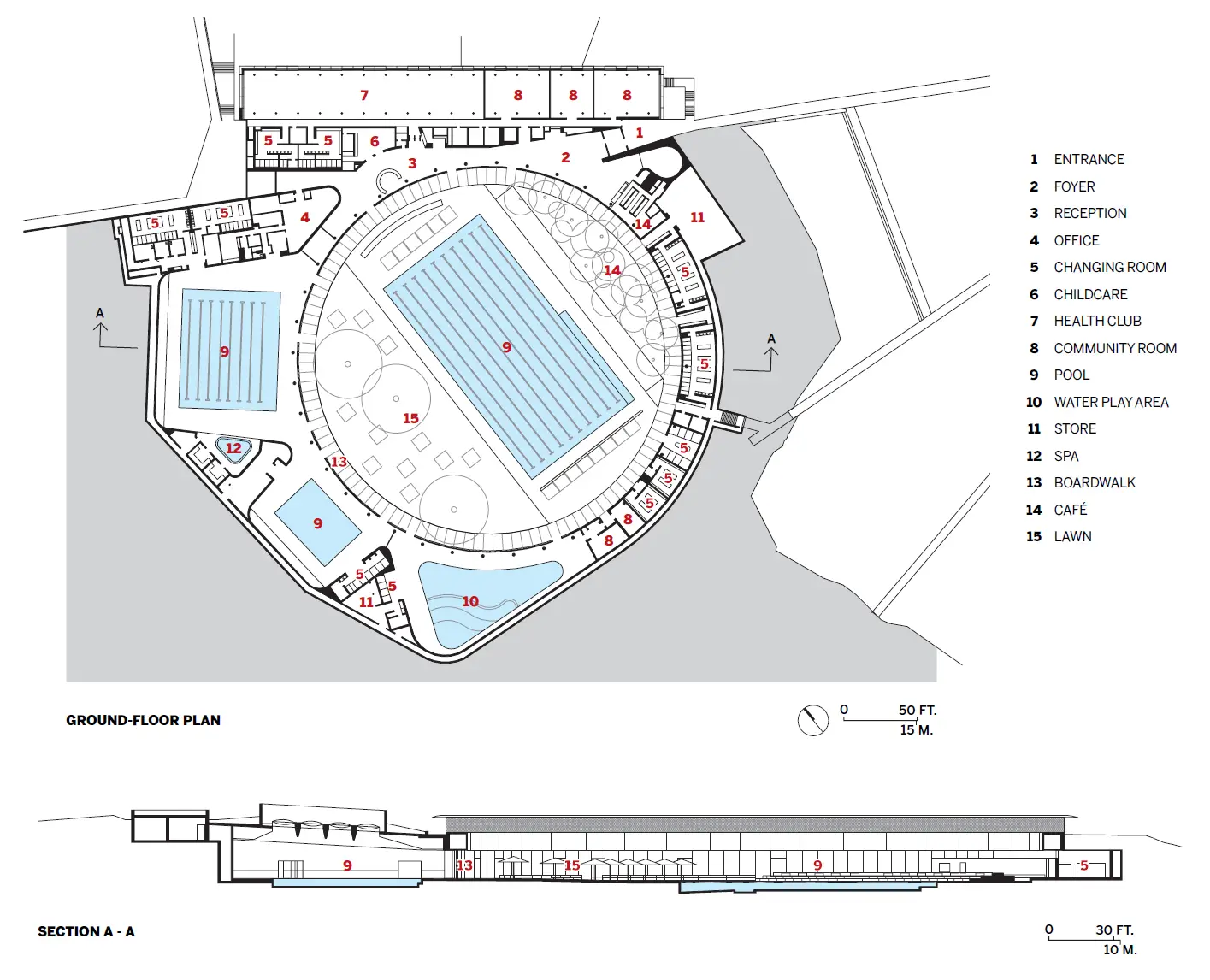In Australia, few public spaces rival the communal allure and close proximity of the beach. Almost 90 percent of Australia’s population lives within 30 miles of the coast, and the sea is fundamental to the country’s national identity, serving as a nexus for gathering, leisure, and sport. This vision extends to public swimming pools, key sites for social integration.
The state of New South Wales has the world’s highest concentration of ocean pools—man-made seawater pools that offer safer swimming than open ocean—but, not that far from the coastal communities, access to aquatic facilities is scarce. This is particularly true in Western Sydney, where rapid and poorly planned urbanization has created heat islands in an area with high unemployment rates and a greater percentage of lower-income families. Distanced from sea breezes, the area regularly records temperatures of up to 18 degrees warmer than the rest of Sydney, which averages a high of 80 degrees during the summer. With the majority of Sydney’s population growth projected to occur in the west, the socioeconomic disparity creates thermal inequity in the area—an increased rate of heat-related illness, the extra expense of providing cooling, and susceptibility to infrastructure failure.

A low profile maintains sight lines to the landscape. Photo © Peter Bennetts, click to enlarge.
Parramatta, a suburb of Sydney—colloquially dubbed the “second city” for its historical significance as the second major European settlement in the country—finds itself at the center of this narrative. A pool built to serve the needs of an expanding community in 1959 was abruptly demolished in 2017 for a stadium, leaving the city and its residents without access to an aquatic center. To accommodate the needs of the rapidly growing region, a group of recreational facilities are planned for development on the UNESCO World Heritage–listed Parramatta Park. One of these, which opened in September of 2023, leads the way in an area of the park known as Mays Hill.
On the approach to Mays Hill from the city, a triangular corner of parkland slopes steeply upward toward swaths of native foliage. The manicured lawn merges into tall grasses, and, in an area surrounded by gum trees, a thin metal halo marks the location of the new Parramatta Aquatic Centre. Grimshaw and Andrew Burges Architects (ABA) as design partners intentionally avoid the conventional “big-box” typology of aquatic facilities with exposed white steel structures, which often lack connection to their surroundings. They’ve prioritized integration with the landscape, embedding the building in the hill.
The new public recreation hub supports a modern gym and wellness center, multipurpose community spaces, a 50-meter outdoor pool, two indoor pools of different sizes, a water playground, and a café. Focusing on natural materiality throughout, gabion walls filled with recycled construction waste carve out entries to the largely subterranean facility. Ribbed precast-concrete panels and blackbutt-timber wall planks line the surfaces within, leading to an Olympic-size outdoor pool excavated as a central ring. Inspired by the distinctive ocean pools dotted along the coast, the design provides enclosure but maintains a topographical continuity with the park. “While it looks simple, it was incredibly complex to achieve. We had to find really smart ways to make the entire building efficient,” says Elena Lucio, project architect at Grimshaw. Although nestled into the hill, the building allows a soft natural light to permeate the indoor facilities through the ETFE skylights—filtering harmful UV rays—complemented by operable shading to mitigate internal heat gains during the sweltering summer months.

A gabion wall encloses the café courtyard. Photo © Peter Bennetts

Blackbutt timber and ribbed concrete line the entryway. Photo © Peter Bennetts
The entire facility is internally connected along the central ring, allowing the mixture of wellness and fitness functions to be adjacent yet separated. Continuous glazing along the inner side creates a constant visual connection to the outdoor pool area at the center, highlighting it as a gathering place. “Everything functions off that circle,” Andrew Burges explains, during a recent visit, as we walk from the reception area into the first pool space. Indoors, a 25-meter recreational pool, a learn-to-swim pool, and water playground are sequential, separated by “changing villages.” These intermediary spaces include spas, saunas, restrooms, and cubicles of various sizes to accommodate the needs of individuals, families, and different cultural groups, simultaneously providing an acoustic buffer between the indoor pools. By catering to the diverse local residents, including providing childcare and appropriate amenities for members of the large Muslim communities that use these facilities, the center fosters an inclusive and thriving environment.

1
A recreational pool (1) and a water playground (2) cater to families. Photos © Peter Bennetts

2
The site is recognized as the traditional land of the Burramattagal people. Preserving its heritage value required that sight lines be maintained to historical surrounds, adding to the complexity of the design. It was partly to help address this that the large building footprint was submerged in the topography of the site, allowing visual continuity to be retained. Landscape architect McGregor Coxall used a restorative-design approach, reintroducing local species onto land that was recently used as a golf course. In consideration of the high cost of cooling, and increased frequency and duration of heat waves projected, heat-mitigation techniques are incorporated throughout the site. The facility incorporates sustainable-design strategies like heat-recovery ventilation and a 193-kilowatt solar panel array on the roof of the gym. Beyond the native greenery, elements like rain gardens that manage runoff water and lawns that replace concrete plazas aim to moderate the ground temperatures. Within the pool area, trees are strategically incorporated into seating areas and around the perimeter of the ring to provide consistent shading.

Outdoor areas include landscaping that helps moderate the ground temperature. Photo © Peter Bennetts
Most existing aquatic facilities in Australia date to the mid-20th century and require extensive renovations or upgrades to meet contemporary community needs. The design of the Parramatta Aquatic Centre embodies the key role of such facilities in modern Australian society and community life. Based on the first five months of operations, the City of Parramatta projects that attendance at the center will exceed 1 million visitors by the end of this year.
Click drawings to enlarge

Credits
Architects:
Grimshaw — Josh Henderson, lead; Elena Lucio, project architect Andrew Burges Architects — Andrew Burges, principal
Landscape Architect:
McGregor Coxall Landscape Architects
Engineers:
Stantec, Tonkin (structural, civil); WSP (facade); Stantec (m/e/fp); Harris Page (hydraulic)
Consultants:
Design Confidence (code); Jensen Hughes (accessibility); Extra Black (wayfinding); SCP Consulting (aquatic); Urbis (planning); Traffix (traffic); Warren Green (leisure); Trigger (heritage)
General Contractor:
Lipman
Client:
City of Parramatta
Size:
154,250 square feet
Cost:
$58.9 million
Completion:
September 2023
Sources
Curtain Wall:
Facade Innovations
EFTE Skylights:
MakMax
Hardware:
Dorma
Interior Finishes:
Arte Domus (tiles); Metra (lockers and partition walls)
Furnishings:
Novofit (equipment)
Pool:
Myrtha (steel); Waterplay (slides); Sunbather (cover); SR Smith (pool equipment)




